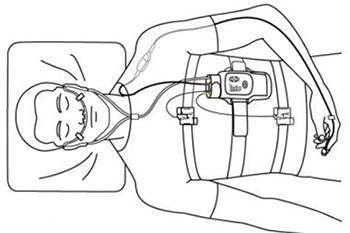Smoking tobacco cigarettes is the main cause of many lung diseases. Tobacco smoke contains more than 4,000 chemicals, many of which are toxic and can cause cancer.
The World Health Organization (WHO) defines smoking as a disorder or disease. This is because people can become physically dependent on nicotine found within cigarettes in addition to the behavioural, psychological and social aspects of smoking.
According to the European Commission’s Eurobarometer survey carried out in 2012, 24% of...
More
Risk Factors
Passive Smoking
Passive smoking, also known as second-hand smoke or environmental tobacco smoke, is when a person breathes in toxic fumes that have remained in the air or surrounding objects after a cigarette has been smoked. It also refers to exposure of unborn babies to their mother’s smoke.
There are three types of passive smoke :
Mainstream smoke : breathed in and breathed out by a smoker
Side-stream smoke : floating off the end of a lit cigarette
Third-hand smoke : smoke that has been absorbed into...
More
Outdoor Air Pollution
The term “air pollution” refers to harmful particles suspended in the air, or gases in the atmosphere, that can be breathed in. It is a mixture including particles, ozone, nitrogen oxides, volatile organic compounds and carbon monoxide. The mixture is different depending on location, season and sources of pollution in the area.
Air pollution comes from :
Human activity: including the burning of fuels in cars, trucks and aeroplanes, industrial activity, power plants and household heating and ...
More
Occupational Risk Factors
‘Occupational risk factors’ is a term used to describe the harmful effects of breathing in various particles, gases, fumes or smoke in the workplace. These different factors are often referred to as ‘agents’.
Workplace guidelines exist in the European Union to ensure that there are limits on known harmful agents. These are decided by the European Commission’s Scientific Committee on Occupational Exposure Limit Values (SCOEL). Ensuring safe levels of a number of dangerous agents is an on-going ...
More
Indoor Air Pollution
Indoor air pollution is the term used to describe exposure to certain substances found in homes, schools, transport and subway stations. Over 900 different compounds have been detected in indoor air and some pollutants may be 2-5 times more concentrated inside rather than outside buildings.
Air pollution can also be found within the workplace, but this is usually studied separately by experts and referred to as ‘work-related or occupational’ health hazards.
Indoor air pollution can be gener...
More
Genetic Susceptibility
Some people may have an increased likelihood of developing a lung disease because of the genes they inherited from their parents.
Genes are short sections of DNA that determine the characteristics of each living organism. Although the DNA sequence is more than 99% identical between different people, there is still scope for more than 10 million potential differences between the gene structure of two people.
Experts use the term genetic susceptibility to refer to genetic factors that may make ...
More
Early Life Risk Factors
There are a number of factors that can occur early in a person’s life that could lead to lung problems later in life. These include not breast feeding, weight gain, a mother’s use of paracetomol during pregnancy, complications during childbirth and indoor and outdoor air quality.
Pre-birth problems with lung development
The lungs may not always grow properly while a baby is in the womb. If the lungs do not grow properly, the baby has a low chance of survival once born. Abnormal lung growth ...
More
Diet & Nutrition
Most respiratory conditions are caused by an interaction between genetic and environmental factors such as smoking, pollution and diet. There is increasing evidence that diet and nutrition play a role in the development and progress of lung diseases.
Being either obese or underweight can both have harmful consequences for lung health.
How does diet affect different conditions?
Asthma
Different foods and nutrients can have an impact on the development and progression of asthma. The effe...
More




